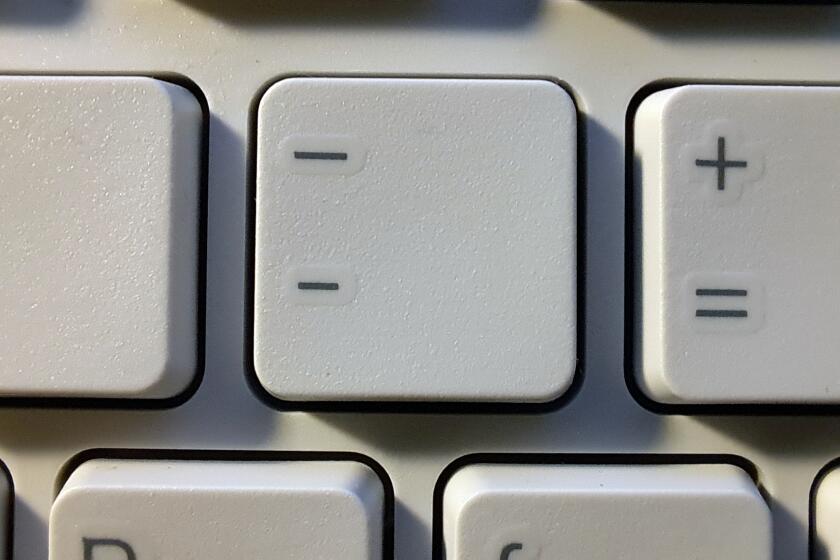Natural Perspectives: Experiencing a derecho wind in Indiana
- Share via
Vic and I just returned from Indiana, where we attended the funeral of my Aunt Shirley, my last surviving older relative on my dad’s side.
Despite the sad occasion, Vic and I enjoyed sightseeing and visiting my relatives. We also got to experience a rare weather phenomenon, a derecho wind.
We arrived in Indianapolis at 5:30 a.m. June 29 on a red-eye flight from Los Angeles. The temperature was predicted to go above 100 degrees Fahrenheit that day, so we headed straight to my brother’s air-conditioned house. Exhausted by the overnight flight, I promptly fell asleep. Vic went birding and returned in the early afternoon.
At about 3 p.m., Vic heard the house rumble and rattle like an earthquake. He woke me up, saying that I had to go outside to see the weather. I was expecting a sunny blast furnace and wasn’t looking forward to the experience.
Imagine my surprise when I felt cool temperatures and saw that a stiff wind was whipping the trees around. The temperature had dropped 30 degrees. I looked up and saw storm clouds that were green and black. That looked like tornado weather to me.
I would have loved a photo of those storm clouds, or a video of the trees being wind-thrashed, but safety trumped photo documentation. My brother’s house had been stripped of part of its roof and some siding in a hailstorm a few months back. I had no desire to be outside if it started hailing again. We headed back into the house.
We learned on the Weather Channel that this powerful wind was called a derecho, which is Spanish for straight. Instead of a circular pattern as with tornadoes, the wind blows strong and straight. A derecho by definition has winds of more than 58 mph, and can even reach 100 mph.
You can see a great animation of the Doppler radar image of this storm as it swept across the country at https://www.erh.noaa.gov/lwx/events/svrwx_20120629/.
This straight line of severe thunderstorms formed near Chicago and blew all the way across to the mid-Atlantic coast. It caused millions of dollars of damage along its path, and knocked out power from Indiana to Washington D.C. And sadly, 20 people were killed by this line of thunderstorms.
We went out for the evening, and when we returned, we noticed that the power had gone out and then come back on. The wind had blown down trees, which in turn took down power lines. Thousands in the area were without power. In fact, hundreds of thousands of homes across the Midwest had power outages that night.
The power surge when the power came back on blew out the air conditioner at my brother’s house, and we had a hot night. Fortunately, my brother was able to repair the air conditioner himself and by mid-morning the next day, the air conditioning was back on. Good thing, because the temperature was on its way back up to 100.
Derecho winds occur only about once a year in Indiana and a few other states to the south of there, and less than that in several other surrounding Midwest states. This term was new to both Vic and me. What were the odds that we would arrive on a day that a big one hit? Were we lucky, or what?
Despite the weather, it was good to be back in Indiana to see the rolling landscape of cornfields bordered by giant hardwood trees. But all is not well on farms in the Midwest. The derecho wind wasn’t the only problem.
The heat has been higher than usual and rainfall has been at near-drought levels. Corn, the major crop, is drying out. Corn is supposed to be “knee high by the Fourth of July.” It clearly wasn’t. The corn was short and soybeans — the only other crop that we saw while driving across many counties — were desiccated.
Most corn grown in Indiana is not sweet corn that goes on dinner tables. It is field corn that is used for animal feed, ethanol production, and high fructose corn syrup manufacture. Today there are hundreds of uses for field corn and its byproducts, and corn production is a major U.S. industry.
The United States dominates in world corn trade, and global corn prices are largely determined by supply and demand in the U.S. Thus world corn prices are determined by the weather in the American Corn Belt.
An average price for corn is $4.72 per bushel, but this year farmers are hoping to receive up to $7 per bushel because yields are expected to be low. A price increase that dramatic will affect the ability of developing nations to purchase corn. It may also affect the price of foods that contain high fructose corn syrup, such as most soft drinks.
In many ways, geographically and culturally, Indiana is a long way from California. But Indiana, California, and the rest of the world are connected by important links of commerce as well as by weather. Global climate change causes high temperatures and droughts, which result in reduced crop yields, which cause increased food prices and food shortages.
No man is an island.
VIC LEIPZIG and LOU MURRAY are Huntington Beach residents and environmentalists.
All the latest on Orange County from Orange County.
Get our free TimesOC newsletter.
You may occasionally receive promotional content from the Daily Pilot.



